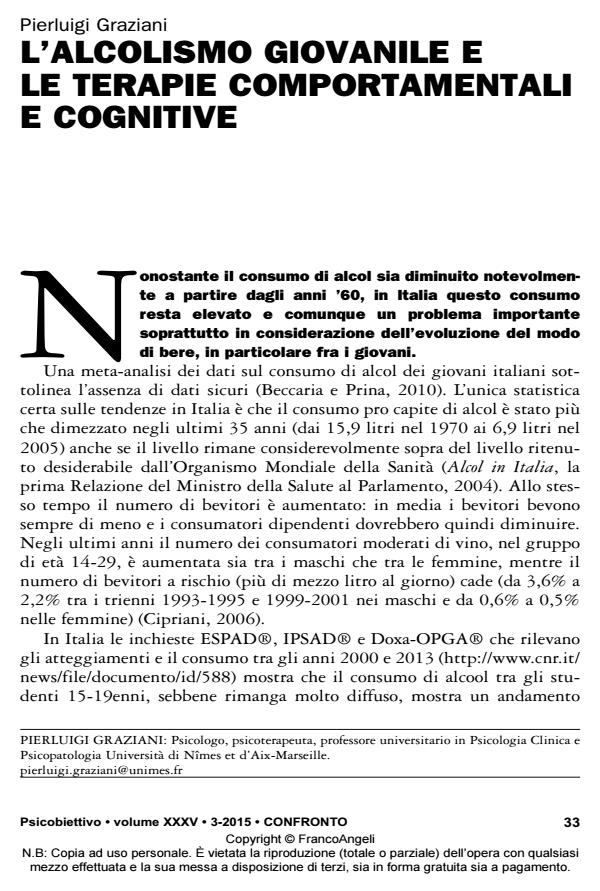Juvenile alcoholism and cognitive behavior therapies
Journal title PSICOBIETTIVO
Author/s Pierluigi Graziani
Publishing Year 2016 Issue 2015/3
Language Italian Pages 20 P. 33-52 File size 146 KB
DOI 10.3280/PSOB2015-003003
DOI is like a bar code for intellectual property: to have more infomation
click here
Below, you can see the article first page
If you want to buy this article in PDF format, you can do it, following the instructions to buy download credits

FrancoAngeli is member of Publishers International Linking Association, Inc (PILA), a not-for-profit association which run the CrossRef service enabling links to and from online scholarly content.
The data on alcohol consumption highlight how young people often have a risk behavior leading sometimes to addiction during adulthood. The cognitive behavior therapies suggest that the drinking behavior is learnt after having a pleaseant experience associated with alcohol consumption. This positive experience is then stored in memory with the context in which the experience occured. Indexes are built in such a way that they trigger the urge to drink when present. Aditionally, the pleasure obtained feeds the need to repeat the experience that produced it (positive reinforcement). What maintains the consumption of alcohol active even when negative consequences start to appear, is that drinking alcohol allows to reduce suffering (negative reinforcement). In addition, the presence of facilitating ideas or excuses decreases the sense of guilt in the consumer and allows him to drink also after considering the bad consequences it leads to. A prerequisite to the cognitive behavior therapies is the quality and the amount of motivation. It is therefore necessary that the young man perceives the disadvantages of alcohol consumption and the recognition that the benefits of change are higher than the advantages of consumption and of the disadvantages of change.
Keywords: Alcohol; Adolescents; Juvenile; Behavioral and Cognitive Therapy; Alcohol Use Disorder; Alcohol Abuse
Pierluigi Graziani, L’alcolismo giovanile e le terapie comportamentali e cognitive in "PSICOBIETTIVO" 3/2015, pp 33-52, DOI: 10.3280/PSOB2015-003003